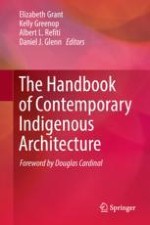2018 | OriginalPaper | Chapter
17. Design in Perspective: Reflections on Intercultural Design Practice in Australia
Authors : Shaneen Fantin, Gudju Gudju Fourmile
Published in: The Handbook of Contemporary Indigenous Architecture
Publisher: Springer Singapore
Activate our intelligent search to find suitable subject content or patents.
Select sections of text to find matching patents with Artificial Intelligence. powered by
Select sections of text to find additional relevant content using AI-assisted search. powered by
